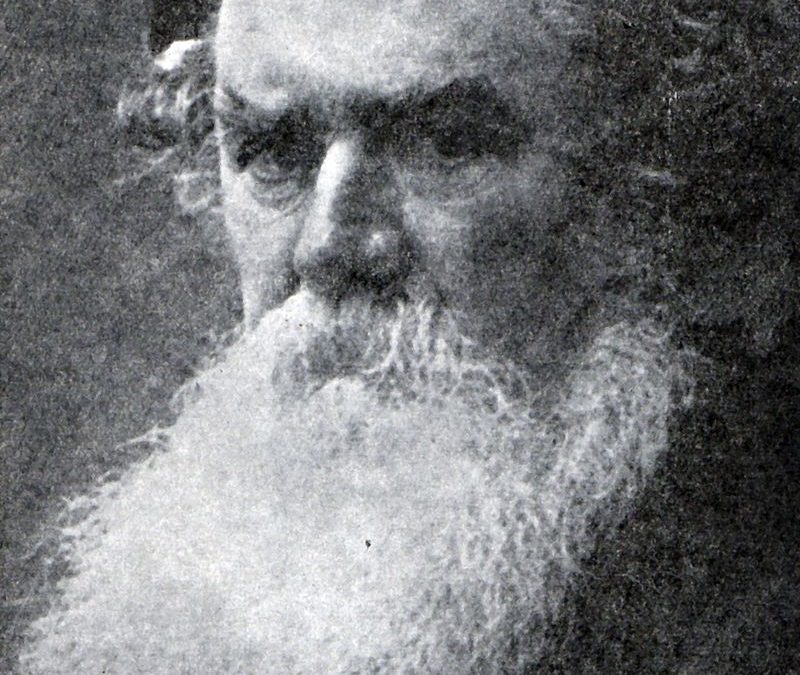Octav Băncilă (b. February 4, 1872, Botoșani, Romania - d. April 3, 1944, Bucharest, Romania) was a Romanian realist painter. Due to the influences she had since childhood from the socialist deputy Ion Nădejde, the Marxist feminist journalist Sofia Nădejde (her sister) and Nicolae Beldiceanu who founded the magazine Contemporanul, the principles that guided him in life and his entire career Octav Băncilă's plastic arts were a tribute to socialist ideas, for which he was also a fervent left-wing political activist. As a result, he founded in 1919 together with Constantin Ion Parhon and Paul Bujor the Workers' Party, which had a short life, because it merged shortly after its establishment with the Peasant Party. Although at the end of his life he was a sympathizer of communist ideas, he was never a member of the Romanian Communist Party. [1]
Octav Băncilă studied at the School of Fine Arts in Iași and had as teachers Gheorghe Panaiteanu-Bardasare and Constantin Stahi. He attended the Munich Academy of Fine Arts in 1893-1898, which was then run by Nikolaos Gyzis and was influenced by Fritz von Uhde, Fritz Mackensen, Leopold Graf von Kalckreuth, Heinrich von Zügel and especially Franz von Lenbach. .
Octav Băncilă left to posterity a work characterized by a very strong critical realism, the artist being known as a pioneer and as the Painter of the uprisings of 1907. Attached to the many and exploited, the painter had four major themes with which he made an era in painting Romanian. These were: the theme of the proletariat, the theme of the peasant, the theme of the Jews and the theme of the gypsy. To all this is added the military theme, Octav Băncilă being one of the first Romanian plastic artists who criticized through their work, the precarious material condition of the Romanian army at the end of the 19th century.
Throughout his life, Băncilă remained critical of all political and social developments in Romania. He supported the workers' actions in Lupeni, Jiu Valley and used art to attack anti-Semitic tendencies in Romanian society. Since 1905, the theme of the proletariat has been an integral part of the artist's creation, the first works The Worker and the Worker at Rest being some of the best in his entire career.
The paintings with the social theme from the life of the Romanian peasantry was started by Ștefan Luchian in 1905 when he made the famous painting At the division of the corn. Octav Băncilă had the merit of being the painter who illustrated the Peasant Uprising of 1907. Relatively, the few plastic representations made in the immediate vicinity of 1907, led irretrievably to the change of the peasant iconography existing until then. As a result, there were artists like Ștefan Luchian, Abgar Baltazar, Nicolae Tonitza, Camil Ressu, Ion Theodorescu-Sion, Francisc Șirato, Ștefan Dimitrescu, Ary Murnu and many other followers of the traditionalist currents that appeared after 1920, whose attention was directed to the dramatic works made around 1907. This happened even though they claimed from Nicolae Grigorescu's painting. Subsequently, the moment of 1907 was a strong source of inspiration for the current of socialist realism, in which artists had an eclectic approach and the result was a mixture between the realistic harshness of Băncilă and the idyllic representation of Nicolae Grigorescu.
Most of the paintings that are the subject of the peasant theme depict various aspects of working in the fields. He painted hundreds of canvases in which shepherds with sheep appear through the clearings of the forests or in the field, peasants reaping and reaping the harvest, peasants plowing and sowing the land, peasants with carts carrying wood and vines from the forest. There are also women who wash clothes, twist twine, women who bring water or throw the net into the river. Many of Băncilă's paintings depict the poor lunch or dinner that only the peasant could afford. The artist captured his characters in the most important and permanent occupations and quite often in melancholy or restful poses. He did not seek the idyll of country life like his predecessors. The realism of work, of the struggle with the hardships of life and with the exploitation that was a habit at that time, made Băncilă's paintings remain to posterity as living documents of the conditions in which the Romanian peasantry lived.
Throughout the work created with a Jewish theme, Octav Băncilă distinguished the social classes and highlighted the antagonism between them. He portrayed the lives of poor Jews in Iasi, revealed the sufferings characteristic of exploited beings, criticized rich moneylenders and moneylenders, and recounted the causes that led to the wave of emigration in the early twentieth century. The fascists and anti-Semites of that time expressed their hostility against Octav Băncilă, who was detested by both the rich Jews and the Christians. The artist was popular among the humble because his humanity was poured out on the oppressed alike regardless of culture, nationality or religion.
An important place in the work of Octav Băncilă is represented by the paintings that have as source of inspiration the life of the gypsies, with predilection of the nomadic gypsies. The painter made over a hundred works in which he evoked the carts with nomads that cross the distances under the skies of blue or purple like petunia or embarrassment. This is how the paintings entitled Caravan, Carts with nomads, Towards the unknown, Nomads, etc. stand out. All the compositions that have the gypsy life as their theme have something sad, but melodious in them. They are like blue heart songs, the whole color is dominated by blue with interweavings of dark reds and purples that whisper their alley. This wandering that is revealed to the viewer, makes one understand the painter's sympathy for people who are forced to earn a living from small occupations.
Through the military theme, Octav Băncilă depicted in his work the hostility of the peasantry towards the military service as well as towards the barracks life with all its shortcomings and difficulties. Thus, in 1898, Băncilă painted the famous painting entitled Recruit, which was the beginning of his critique against the way the Romanian army was organized and led. In addition to the themes that established him in Romanian fine arts, Octav Băncilă created numerous portraits, static natures, paintings with flowers and landscapes, all of which delighted the contemporary auction houses.
*** List of Romanian Painters and Romanian Painters' Signatures Database are projects of Alexandra's Gallery, whose first stage is the end of 2019. The two products will be public, in order to make the art market transparent and to facilitate the identification and trading of authentic classical and contemporary paintings. Painters who want to be part of this project are asked to contact us.
See the database here: A, B, C, D, E, F, G, H, I, J, K, IT, M, N, A, P, R, S, T, U, V, W, X, Y, Z.
For more details about some of the artists we promote, we recommend the section Painters. To purchase their works, enter alexandra-s.com/magazin/





